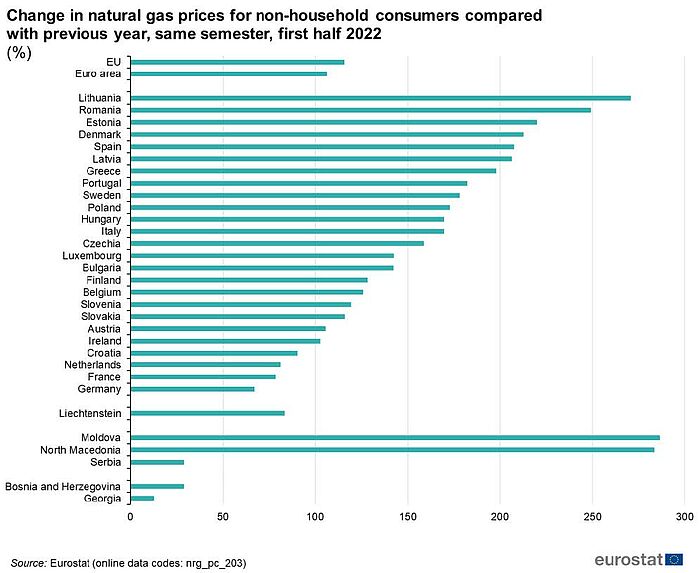At the end of October, Eurostat published new statistics on inflation, electricity and gas prices in the European Union and the euro area. The statistics show unprecedented growth records for all of the mentioned indicators.
Inflation rate
The expected annual inflation rate for October, according to Eurostat, is 10.7%. The main contributors to the inflation increase are energy – 41.9%, as well as food, alcohol and tobacco – 13.1%.
As follows from the data above, the inflation rate in October is a record over the last decade, and for energy more than four times higher than the previous peak rates in 2016 and 2018. Eurostat also notes that services account for about 41.7% of households' final monetary consumption expenditures, while food, alcohol & tobacco, and energy account for 20.9% and 10.9%, respectively. Nevertheless, it is energy and food that may have the most significant impact on the overall inflation rate.
Electricity prices
Electricity price trends for both household consumers and non-household consumers, especially for industry, are roughly the same – a significant increase in rates from the second half of last year and especially in the second half of 2022.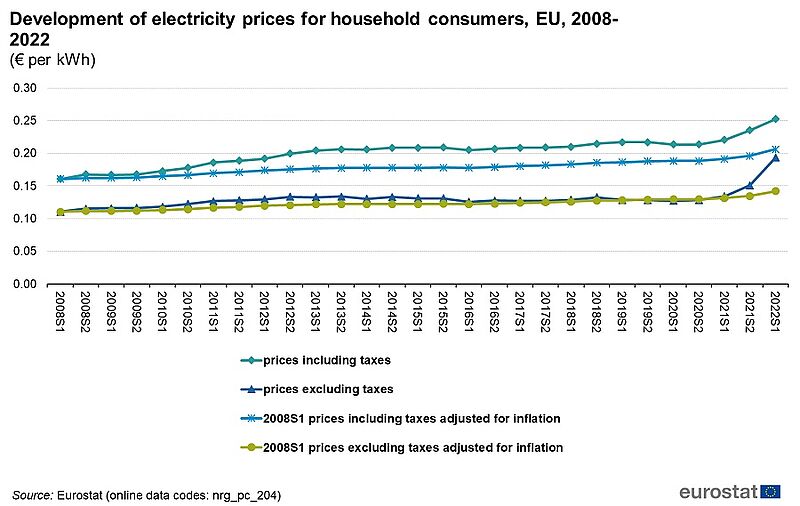
In general, electricity tariffs in the EU for household consumers increased by about 15% (€0.2525 per kWh) compared to the same period last year, but in countries such as the Czech Republic, Latvia and Denmark they exceeded or approached 60%.
The average electricity price in the EU for non-household consumers in the first half of 2022 was €0.1833 per kWh.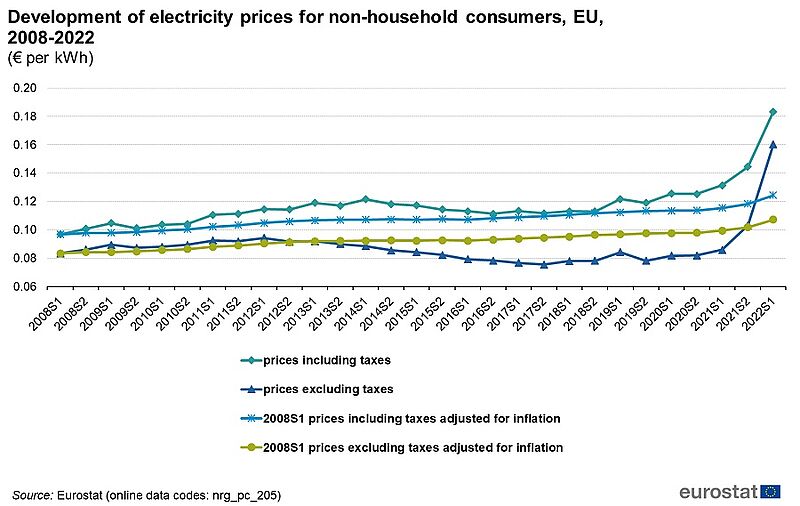
The largest increases were recorded in Greece (159.1%) and Romania (136.6%), followed by Denmark, Bulgaria and Spain. Malta, Portugal, Germany and Finland were least affected by this trend.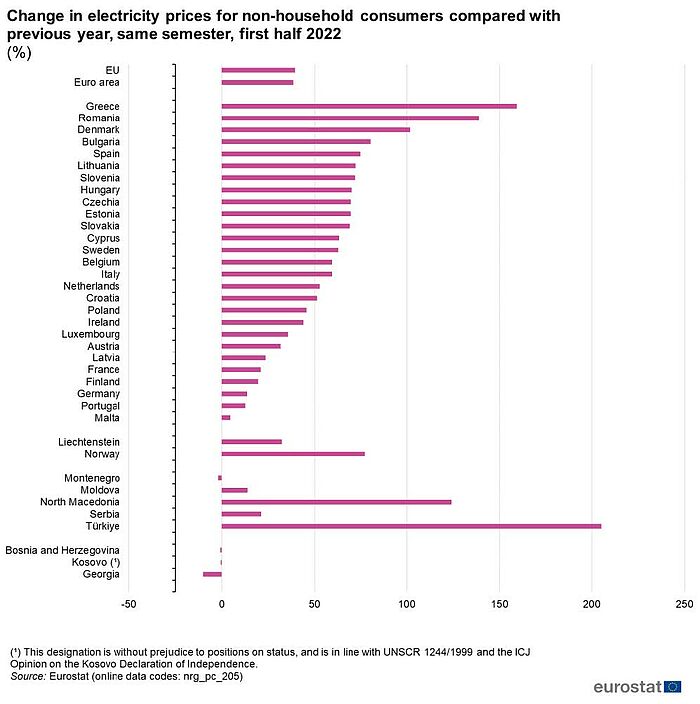
Natural gas prices
As in the case of electricity, gas prices showed a similar trend – a significant increase during the second half of 2021 and the first half of 2022.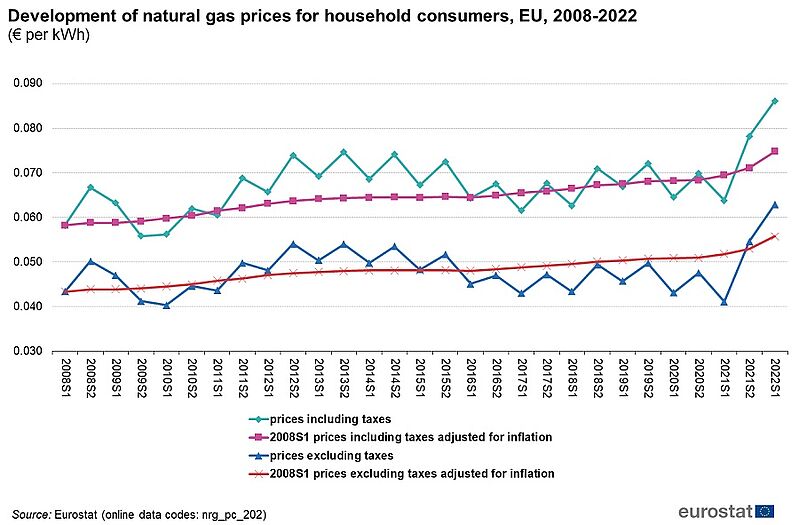
In real terms, the increase for residential customers during the year went from 0.0638 per kWh to 0.0861 euros per kWh by the end of the second half of 2022.
The leader of this negative trend was Estonia, with an increase of more than 154% in the first half of 2022 compared to 2021. It was followed by Lithuania (110.4%) and Bulgaria (107.6%). Moldova, which is not part of the EU, saw a terrifying increase of over 225%. Hungary and non-EU Serbia saw a marginal decline in prices.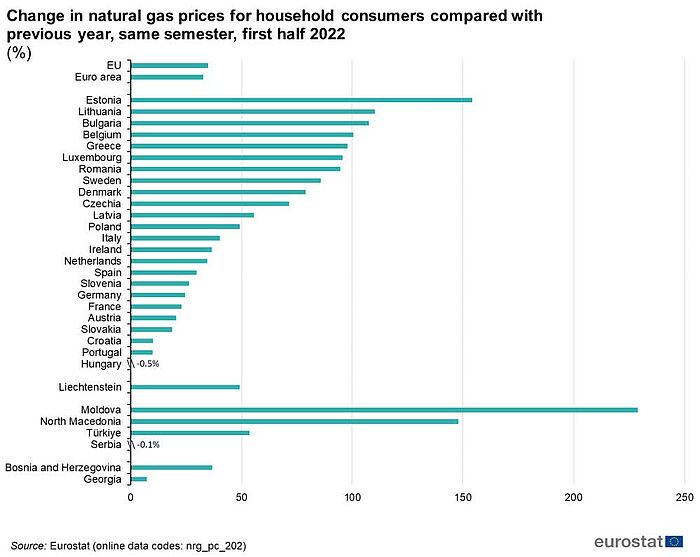
As for the specifics of gas price increases for non-household consumers, prices rose in all EU member states that provided the respective data. The smallest increase was in Germany – 67.1%, the maximum in Lithuania – 270.9%. On average, EU prices reached €0.0588 per kWh in the second half of the year 2022 (€0.0365 per kWh a year earlier).